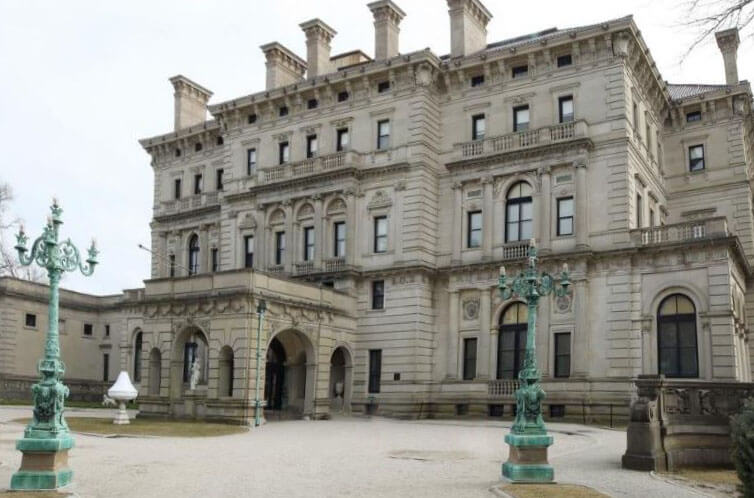The history of Newport (and therefore to a degree the cultural history of America) is written in the architecture of our “City by the Sea.” Unfortunately, that history is written in columns, rooflines, door styles, and a myriad of other architectural elements that are hard for those not trained in their unique language and grammar to read and understand. Remarkably, this past month has seen the completion of two longstanding projects which will help bridge the divide for those who wish to look more deeply into the story of Newport through its architecture and urban planning.
The first of these two projects is Rockwell Stensrud’s recently published book Newport: A Lively Experiment (1639-1969). This beautifully produced and well-written volume is an in-depth examination of the people who founded and lived in Newport, their works, and (of course) their buildings. Although architecture is not the central theme of this publication, it is a continual thread that resonates throughout the volume, like the violin melody in symphonic composition. This book is the first work of the Redwood Library Press and is available for purchase at that magnificent Peter Harrison-designed building. The Redwood Library is often cited as the first neo-Palladian structure to be built in North America and had a major influence on Thomas Jefferson who visited and studied the building intently in 1784, long before his design for the University of Virginia. The theme of Stensrud’s book has helped inspire Newport leaders to apply for World Heritage Site status on the basis of the city’s importance in inventing the idea of religious tolerance, which was a strange and alien idea to the world of the seventeenth century.
The second project is an even more perfect complement to the study of Newport architecture. The AIA Guide to Newport, written by Ron Onorato, a professor of architectural history at URI has taken several years of research to compile and complete. The forward of the book, written by noted architectural historian Richard Guy Wilson, declares “per square foot, Newport possesses more great architecture than any other American city.” This audacious claim, however, is well supported by this wonderful and beautifully illustrated volume, which is destined to be both a resource and reference for architectural historians near and wide. On every page is the photograph, a map, or a story of a building of architectural merit and importance. For any student of architecture, it is like a delicious all-you-can-eat buffet that must be consumed over multiple sittings.
The AIA Guide to Newport is divided into nine geographically oriented tours and illustrates in photographs and concise descriptions the importance of several hundred buildings, structures, or places in and around the city. Although no book on Newport architecture can claim to be wholly comprehensive, the breadth, depth, attractiveness, and ease of use of this publication will serve lovers and students of architecture for years to come. It is composed in a slim handbook form so that it can be slipped into a purse or bag and be carried out into the city where the architecture actually resides. This book is now available at the Newport Art Museum Shop and other area bookstores.
Rockwell Stensrud’s book signing drew several hundred to the Redwood Library about two weeks ago. A presentation and book signing by Ron Onorato for The AIA Guide to Newport are scheduled for June at the Newport Art Museum. If you missed the first presentation or cannot wait for the second, you still have the best alternative of all — these two wonderful new books on Newport themselves!
Looking to remodel your home? Let’s connect.
Join the Architectural Forum to stay up-to-date with architectural news from Rhode Island and abroad.
Ross Sinclair Cann, AIA, LEED AP, is a historian, educator, and practicing architect living and working in Newport. Maya Lin was a Teaching Assistant in an architectural history class that Mr. Cann took while studying at Yale. This article was initially published in ARCHI-TEXT, in Newport This Week, May 7, 2007.
